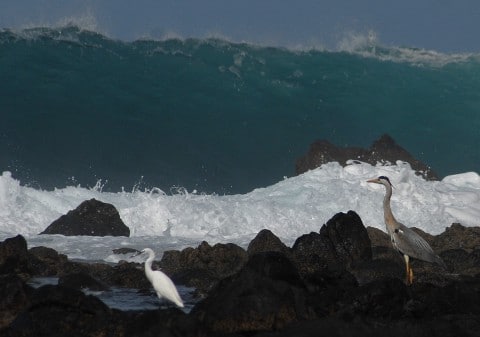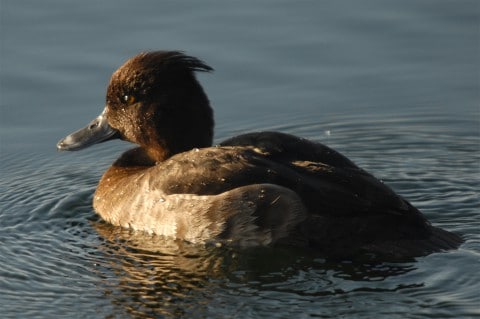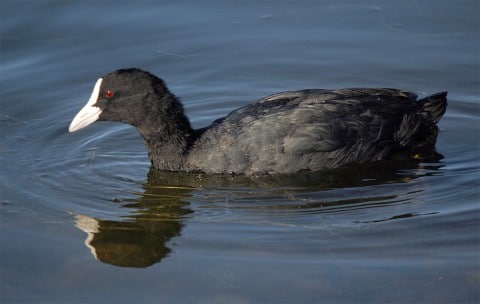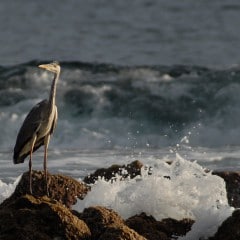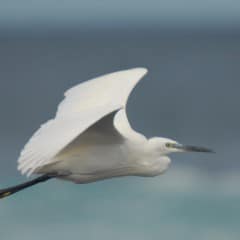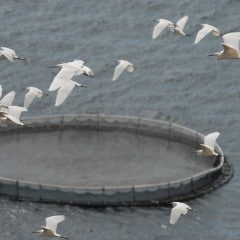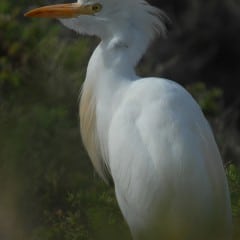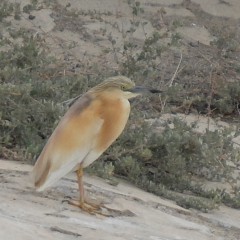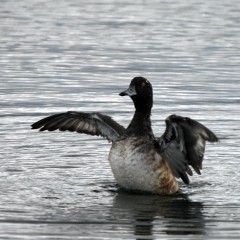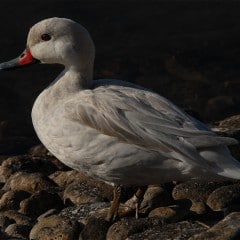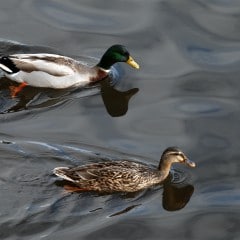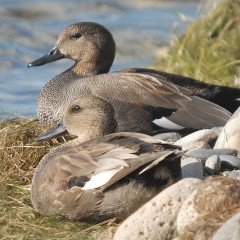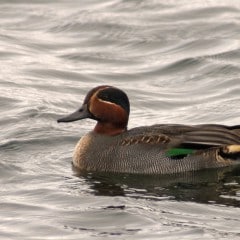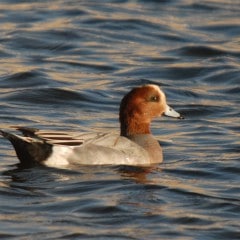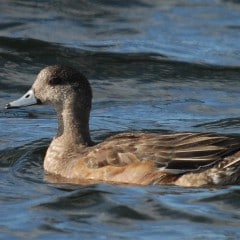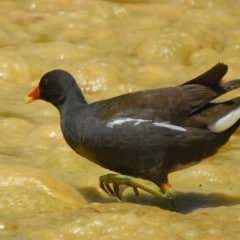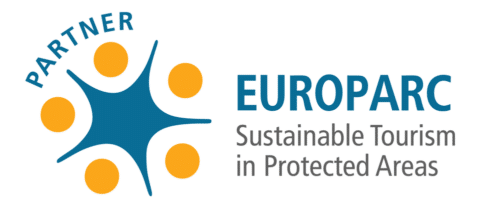Here, different birds are summarized, which can be observed especially near water reservoirs or on the coast. These include herons, ibis, ducks and railings.
Family Ardeidae: Herons
As most showy bird of the coasts, the little egret (Egretta garceta, garceta común, 56 cm) hunts on the search for the small pond-fish all year round (Lanzarote and Tenerife) at the coast-waters. It is usually the only heron on the coast and easy to spot because of its white plumage. Especially in winter you can also find it in larger numbers on all islands, for example near the fish farms (more than 200 animals on the cliffs of the Montaña de Guaza in the south of Tenerife in 2007). The dark gray beak and the yellow feet mark the (otherwise similar to the Great Egret (Ardea alba) but much smaller) southern European representative of the family.

At the water reservoirs and ponds in the inland, one can find also the easily recognizable grey heron (Ardea cinérea, Garza real, 95 cm), the western cattle egret (Garcilla buyera, Bubulcus ibis, 50 cm) and the black-crowned night heron (Nycticorax nycticorax, Martinete, 62 cm) flying up from its hiding places in the twilight. The hide-living bittern like the great bittern (Botaurus stellaris, 75 cm, Avetoro común) is near relative.
Family Threskiornithidae
From the family the Eurasian spoonbill (Platalea leucorodia, Espatula, 85 cm) and as a particularly rare guest the African sacred ibis (Threskiornis aethiopicus) among the travellers at the large water reservoirs in the inland, for example from Tenerife, occur.
Family Anatidae
In the freshwater reservoirs, the probability to meet one or the other duck is quite high. Most of the ducks you meet along the way are domesticated. The ruddy shelduck (Tadorna ferruginea, Tarro canelo, 68 cm) now breeds on Fuerteventura and in winter species known from Europe such as the mallard (Anas platyrhynchos, Añade real) regularly come here. Especially the eastern islands are also stopovers for the annual trains between Africa and Europe, for example for northern pintail (Anas acuta, Añade rabudo), northern shoveler (Anas clypeata, Pato cuchara). Bird lovers will occasionally find rarities drifting from America in the migratory periods or in winter, such as the ring-necked duck (Aythya collaris).
Family Rallidae: Rails

The common moorhen (Gallinula chloropus, Polla de Agua, 33 cm) lives in freshwater reservoirs or ponds with vegetation-rich banks and hatches 6 – 8 eggs each in two successive breeding phases from February to August. From these, only 1 – 2 chicks come through each. They feed on insects and their larvae, snails, worms, but also on leaves, fruits and young shoots of the water vegetation and the plants of the surroundings.
The Eurasian coot (Fulica atra, Focha Común, 38 cm) lives on T, GC, G and F., where it breeds in a few water reservoirs with low vegetation. On the other islands, visitors can occasionally be observed. In the months from October to April additional overwinterers can be seen. They eat everything, but are mainly vegetarian oriented. Algae and water plants are collected from the surface or are pulled up by diving.


